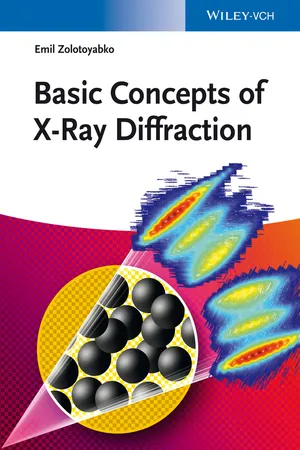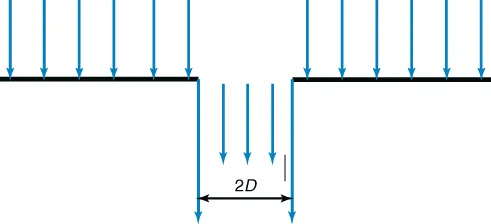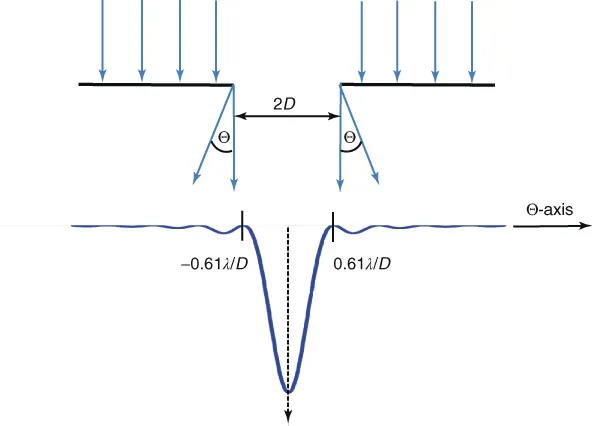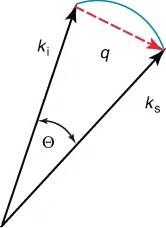
- English
- ePUB (mobile friendly)
- Available on iOS & Android
Basic Concepts of X-Ray Diffraction
About This Book
Authored by a university professor deeply involved in X-ray diffraction-related research, this textbook is based on his lectures given to graduate students for more than 20 years. It adopts a well-balanced approach, describing basic concepts and experimental techniques, which make X-ray diffraction an unsurpassed method for studying the structure of materials. Both dynamical and kinematic X-ray diffraction is considered from a unified viewpoint, in which the dynamical diffraction in single-scattering approximation serves as a bridge between these two parts. The text emphasizes the fundamental laws that govern the interaction of X-rays with matter, but also covers in detail classical and modern applications, e.g., line broadening, texture and strain/stress analyses, X-ray mapping in reciprocal space, high-resolution X-ray diffraction in the spatial and wave vector domains, X-ray focusing, inelastic and time-resolved X-ray scattering. This unique scope, in combination with otherwise hard-to-find information on analytic expressions for simulating X-ray diffraction profiles in thin-film heterostructures, X-ray interaction with phonons, coherent scattering of Mossbauer radiation, and energy-variable X-ray diffraction, makes the book indispensable for any serious user of X-ray diffraction techniques. Compact and self-contained, this textbook is suitable for students taking X-ray diffraction courses towards specialization in materials science, physics, chemistry, or biology. Numerous clear-cut illustrations, an easy-to-read style of writing, as well as rather short, easily digestible chapters all facilitate comprehension.
Frequently asked questions
1
Diffraction Phenomena in Optics

























Table of contents
- Cover
- Related Titles
- Title Page
- Copyright
- Dedication
- Preface
- Introduction
- 1: Diffraction Phenomena in Optics
- 2: Wave Propagation in Periodic Media
- 3: Dynamical Diffraction of Particles and Fields: General Considerations
- 4: Dynamical X-Ray Diffraction: The Ewald–Laue Approach
- 5: Dynamical Diffraction: The Darwin Approach
- 6: Dynamical Diffraction in Nonhomogeneous Media: The Takagi–Taupin Approach
- 7: X-Ray Absorption
- 8: Dynamical Diffraction in Single-Scattering Approximation: Simulation of High-Resolution X-Ray Diffraction in Heterostructures and Multilayers
- 9: Reciprocal Space Mapping and Strain Measurements in Heterostructures
- 10: X-Ray Diffraction in Kinematic Approximation
- 11: X-Ray Diffraction from Polycrystalline Materials
- 12: Applications to Materials Science: Structure Analysis
- 13: Applications to Materials Science: Phase Analysis
- 14: Applications to Materials Science: Preferred Orientation (Texture) Analysis
- 15: Applications to Materials Science: Line Broadening Analysis
- 16: Applications to Materials Science: Residual Strain/Stress Measurements
- 17: Impact of Lattice Defects on X-Ray Diffraction
- 18: X-Ray Diffraction Measurements in Polycrystals with High Spatial Resolution
- 19: Inelastic Scattering
- 20: Interaction of X-Rays with Acoustic Waves
- 21: Time-Resolved X-Ray Diffraction
- 22: X-Ray Sources
- 23: X-Ray Focusing Optics
- 24: X-Ray Diffractometers
- References
- Index